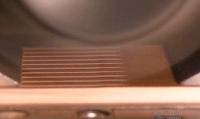HISTORY:
 |
| Metal Sharpener. |
Before the development of dedicated pencil sharpeners, a pencil was sharpened by whittling it with a knife. Pencil sharpeners made this task much easier and gave a more uniform result.
Bernard Lassimone, a French mathematician, applied for the first patent (French patent #2444) on pencil sharpeners in 1828. In 1847, Therry des Estwaux invented an improved mechanical sharpener. The first American pencil sharpener was patented by Walter K. Foster of Bangor, Maine in 1855. Electric pencil sharpeners for offices have been made since at least 1917.
RAW MATERIALS:
Magnesium, Steel and Screw.







